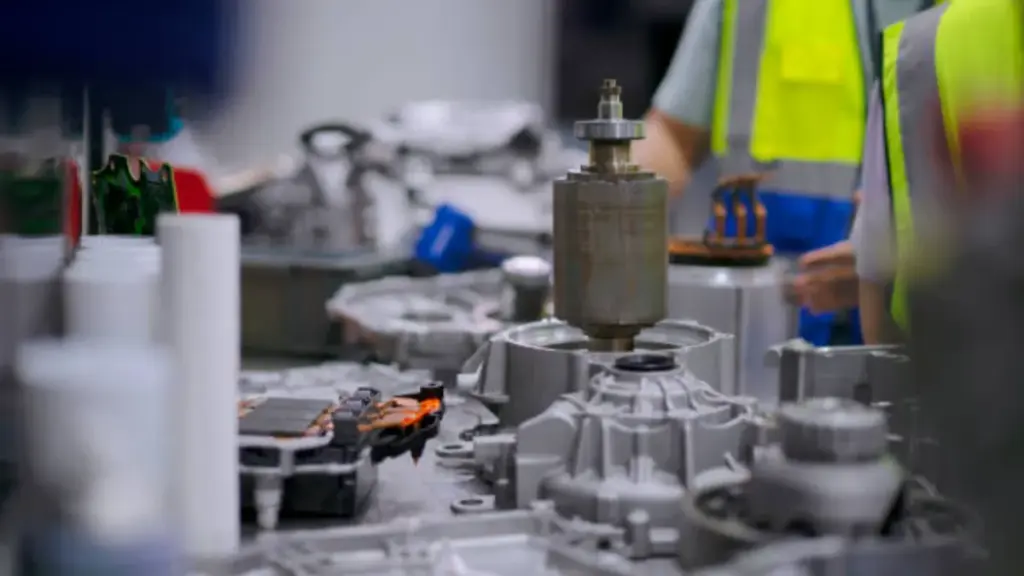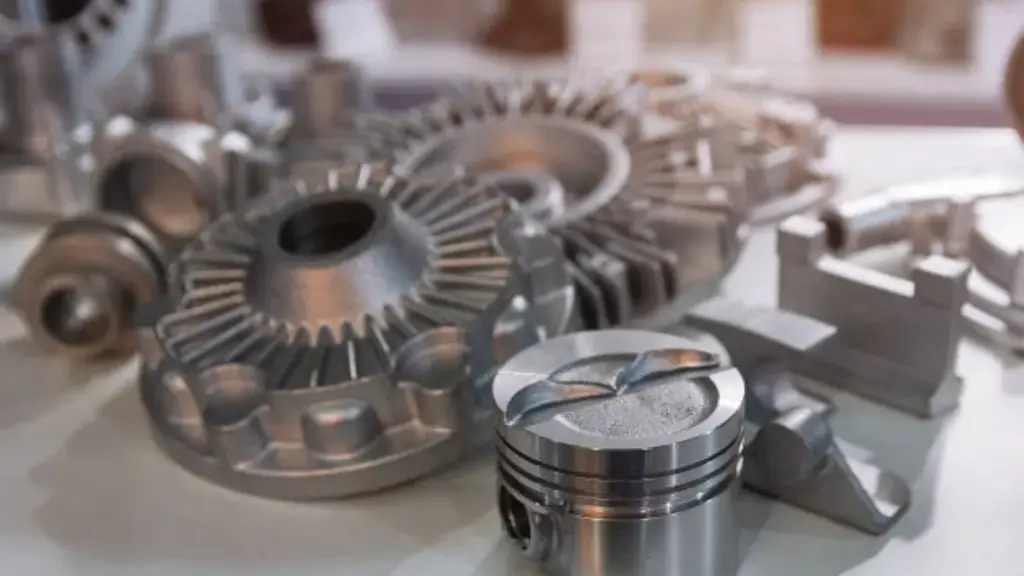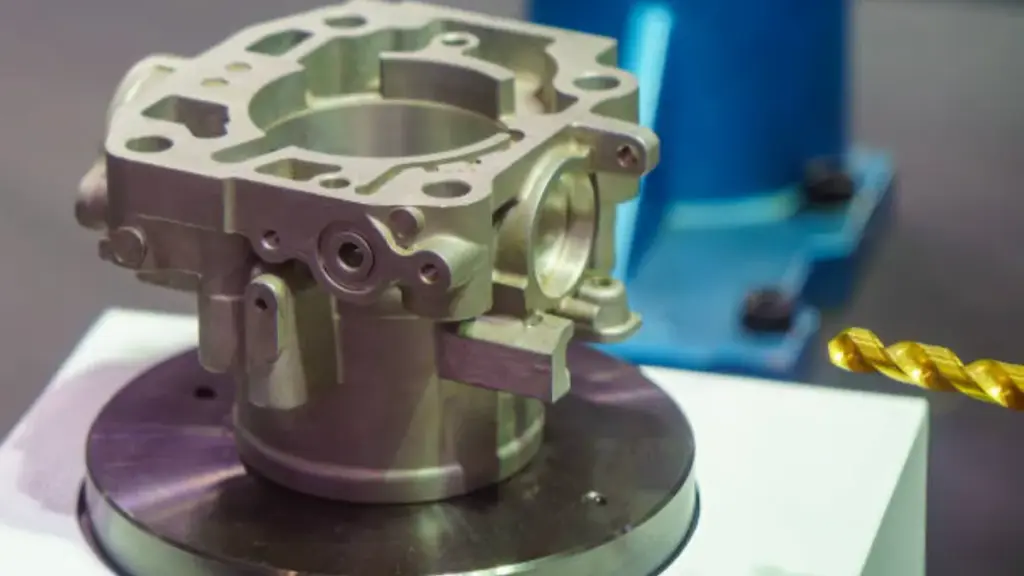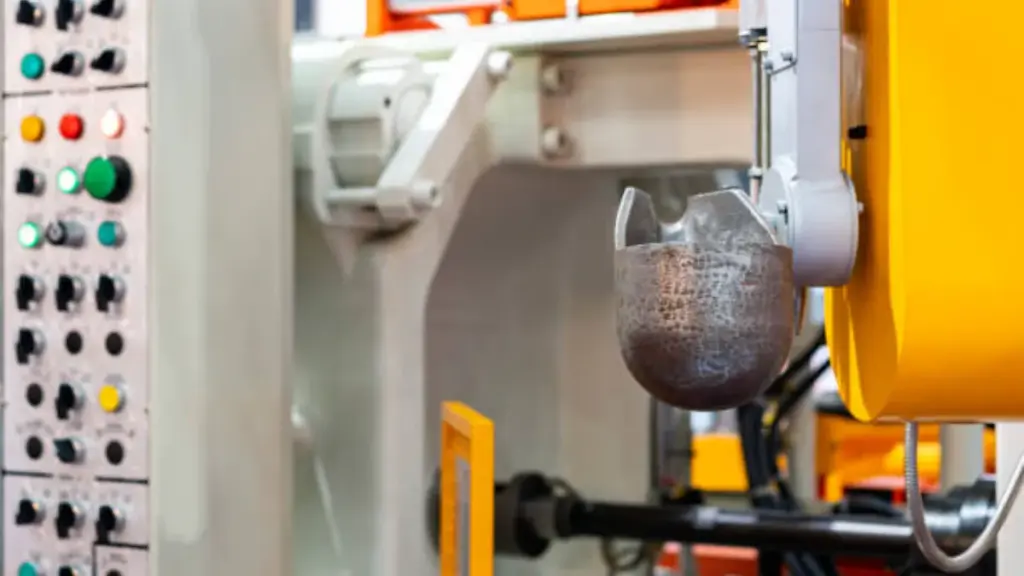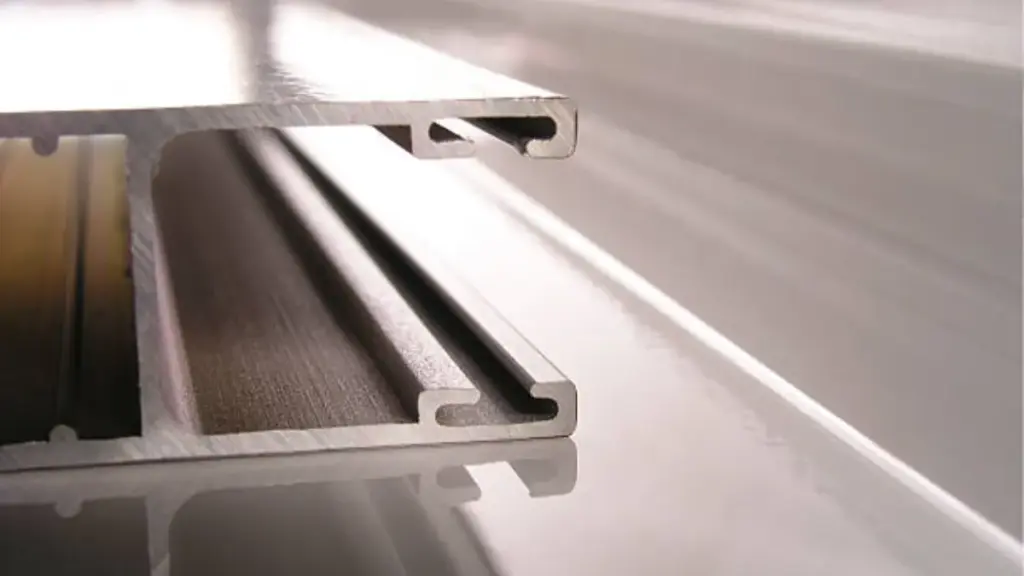A usinagem CNC é um processo de fabricação de ponta que utiliza controles computadorizados para operar e manipular a máquina-ferramenta. Esta tecnologia revolucionou a maneira como os produtos são projetados e produzidos, permitindo aumentar a precisão, eficiência, e personalização. Neste guia, Vamos explorar o básico da usinagem CNC, incluindo seus benefícios, tipos de máquinas, componentes, processos, materiais e muito mais .
O que é usinagem CNC?

Usinagem CNC, que significa Usinagem de controle numérico de computador, é um processo de fabricação que utiliza controles computadorizados para operar e manipular máquinas -ferramentas. Esta tecnologia permite o automatizado e preciso modelagem de vários materiais para criar componentes e peças complexos.
Benefícios da usinagem CNC
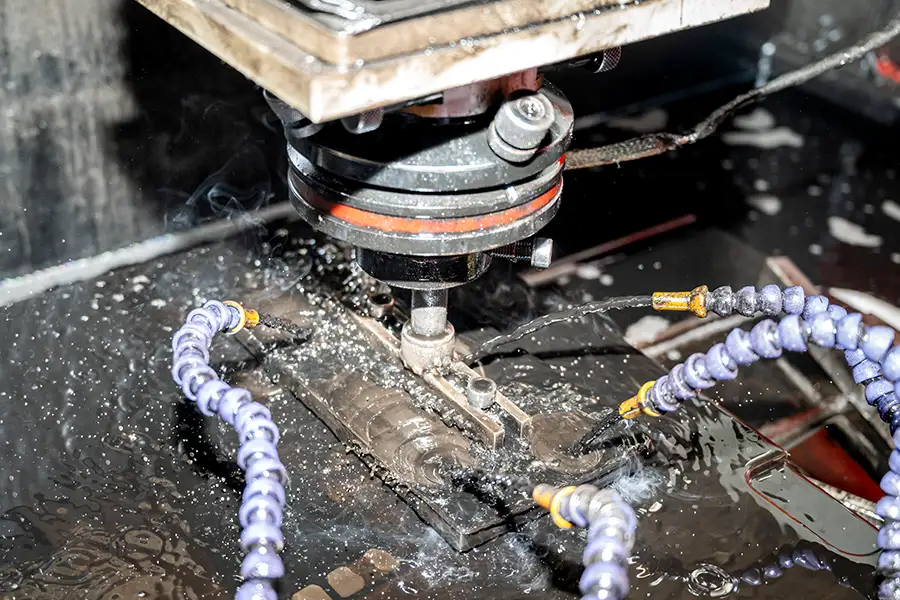
Usinagem CNC oferece uma ampla gama de benefícios, tornando -o uma tecnologia versátil e indispensável em processos de fabricação modernos.
Precisão e exatidão
Uma das principais vantagens da usinagem CNC é sua capacidade de produzir peças altamente precisas e precisas. Com automação controlada por computador, Máquinas CNC podem obter tolerâncias e consistência rígidas que são difíceis de replicar com processos manuais.
Eficiência e produtividade
A usinagem CNC oferece maior eficiência e produtividade em comparação com os métodos de fabricação tradicionais. A automação dos processos reduz o tempo e o trabalho necessários para produzir peças, resultando em tempos de resposta mais rápidos e maior saída.
Custo-benefício
Embora o investimento inicial em equipamentos de usinagem CNC possa ser significativo, A economia de custos a longo prazo é substancial. A automação e eficiência da usinagem CNC podem levar a custos de mão -de -obra reduzidos, desperdício de material minimizado, e economia geral de custos na produção.
Designs complexos
A usinagem CNC permite a criação de projetos complexos e complexos que seriam difíceis ou impossíveis de alcançar com os métodos tradicionais de usinagem. A capacidade de programar caminhos complexos de ferramentas e geometrias abre um mundo de possibilidades de design para os fabricantes.
Tipos de máquinas CNC
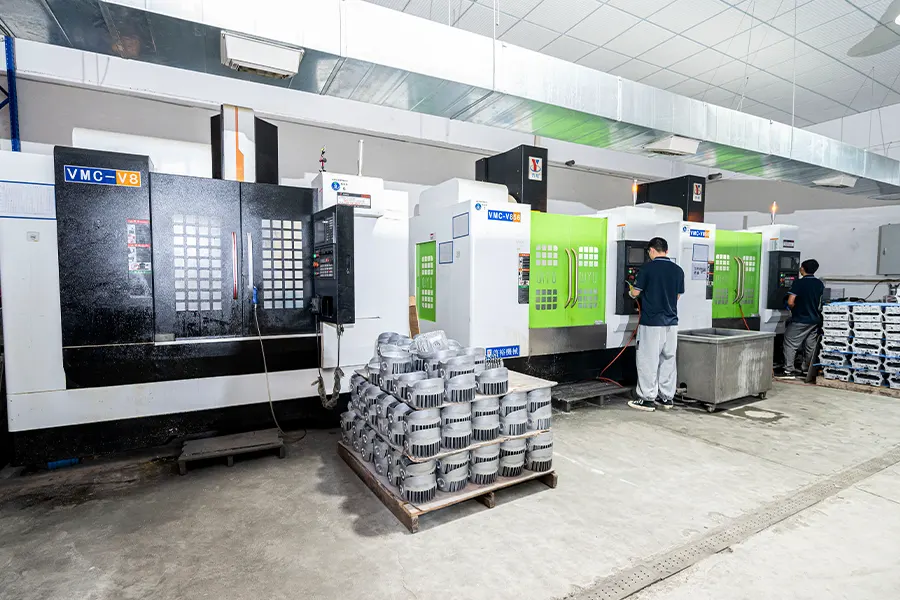
Máquinas de moagem CNC
Máquinas de moagem CNC usam cortadores rotativos para remover o material de uma peça de trabalho. São máquinas versáteis capazes de criar uma ampla gama de formas e tamanhos.
Máquinas de torneamento do CNC
As máquinas de torneamento CNC são usadas para criar peças cilíndricas girando a peça de trabalho enquanto uma ferramenta de corte remove o material. Essas máquinas são ideais para produzir peças com simetria rotacional.
Cortadores de plasma CNC
Os cortadores de plasma CNC usam uma corrente de alta velocidade de gás ionizado para cortar materiais como metal. Eles são comumente usados para fabricação de metal e aplicações de corte.
Cortadores a laser CNC
Os cortadores de laser CNC utilizam um laser de alta potência para cortar materiais com precisão e velocidade. Eles são ideais para aplicações complexas de corte e gravação.
Componentes básicos das máquinas CNC
Controlador
O controlador serve como o cérebro da máquina CNC, Interpretando os dados do design e convertendo -os em comandos de movimento para as máquinas -ferramentas.
Máquina -ferramenta
A máquina -ferramenta é o equipamento físico usado para moldar e cortar a peça de trabalho. É controlado pelo sistema CNC para executar as operações necessárias.
Peça de trabalho
A peça de trabalho é a matéria -prima que está sendo moldada e modificada durante o processo de usinagem. Está garantido para a máquina -ferramenta para processamento.
Ferramenta de corte
A ferramenta de corte é a ferramenta que remove o material da peça de trabalho para criar a forma desejada. É controlado pela máquina -ferramenta para executar operações de corte precisas.
Processo de usinagem CNC passo a passo
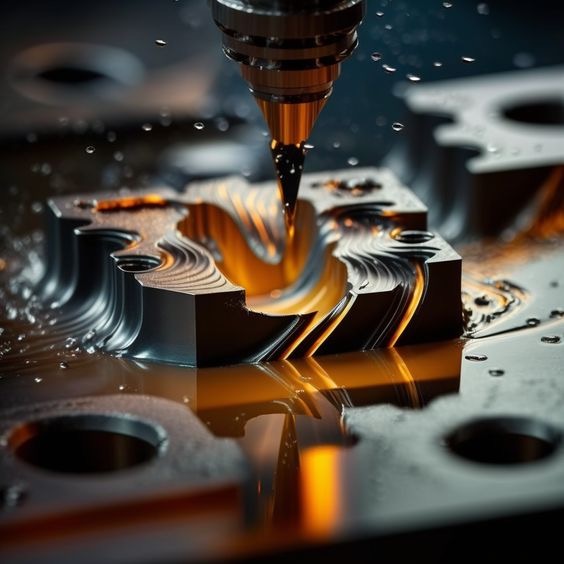
Para obter uma compreensão mais profunda do básico da usinagem CNC, É essencial compreender seu mecanismo operacional. Vamos explorar as cinco etapas seguintes.
#1: Projetando a parte
A primeira etapa no processo de usinagem CNC é projetar a peça usando o software CAD. O designer cria um modelo digital da parte, incluindo dimensões, características, e tolerâncias.
#2: Programando a máquina
Depois que a peça for projetada, O software CAM gera caminhos e instruções para a máquina CNC. Essas instruções especificam os movimentos das máquinas -ferramentas e as operações de corte a serem executadas.
#3: Configurando a máquina
A máquina CNC é configurada de acordo com as instruções geradas pelo software CAM. Isso inclui carregar a peça de trabalho, protegendo -o para a máquina -ferramenta, e calibrar a máquina para a operação específica.
#4: Executando a operação
Com a máquina configurada e programada, A operação de usinagem CNC pode começar. A máquina segue os caminhos de ferramentas predefinidos e executa as operações de corte para moldar a peça de trabalho, conforme especificado no design.
#5: Controle de qualidade
Durante todo o processo de usinagem, Medidas de controle de qualidade são implementadas para garantir que a parte final atenda às especificações necessárias. Inspeções e medições são realizadas para verificar a precisão e a qualidade do produto final.
Materiais usados na usinagem CNC
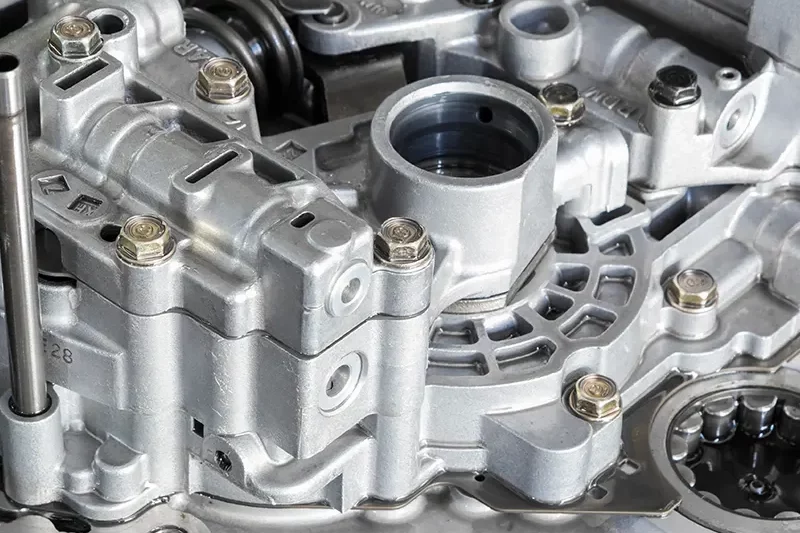
Existem ampla variedade de materiais que são comumente utilizados em processos de usinagem CNC.
Metais
Metais como alumínio, aço, e titânio são comumente usados na usinagem CNC devido à sua força, durabilidade, e usinabilidade. Esses materiais são ideais para uma ampla gama de aplicações em vários setores.
Plásticos
Plásticos como abdominais, PVC, e acrílicos são escolhas populares para usinagem CNC devido à sua versatilidade, propriedades leves, e custo-benefício. Eles são usados em aplicações onde o peso, resistência à corrosão, E a estética é importante.
Madeira
Materiais de madeira, como madeira de lei, madeira macia, e madeira compensada também são usados na usinagem CNC para aplicações como móveis, armários, e itens decorativos. Wood oferece uma estética natural e fácil máquinabilidade.
Compósitos
Materiais compostos, que são compostos de dois ou mais materiais com propriedades diferentes, estão ganhando popularidade na usinagem CNC. Fibra de carbono, fibra de vidro, e os compósitos kevlar oferecem altas índices de resistência e peso e são usados no aeroespacial, automotivo, e indústrias de artigos esportivos.
Aplicações da usinagem CNC
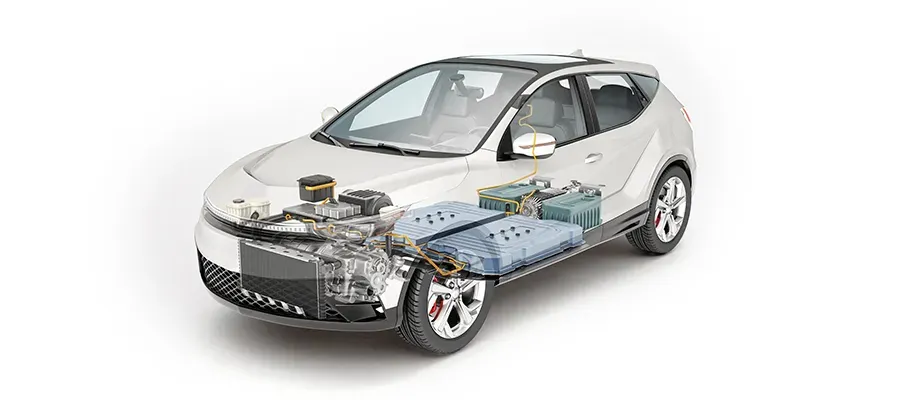
Por causa de sua versatilidade e inúmeras vantagens, A usinagem CNC encontra aplicações extensas em vários setores industriais.
Indústria aeroespacial
A indústria aeroespacial depende muito da usinagem CNC para a produção de componentes de aeronaves, Peças do motor, e elementos estruturais. A precisão, precisão, e a repetibilidade da usinagem CNC o torna indispensável na fabricação aeroespacial.
Indústria Automotiva
No indústria automotiva, A usinagem CNC é usada para produzir uma ampla gama de componentes, De peças do motor a painéis do corpo. A eficiência e a consistência da usinagem CNC garantem que os fabricantes de automóveis possam atender aos exigentes padrões de qualidade da indústria.
Indústria médica
A usinagem CNC desempenha um papel crucial na indústria médica para a produção de instrumentos cirúrgicos, implantes, e dispositivos médicos. A capacidade de criar peças complexas e personalizadas com tolerâncias apertadas torna a usinagem do CNC um método de fabricação preferido para aplicações médicas.
Indústria Eletrônica
O indústria eletrônica depende da usinagem do CNC para a produção de placas de circuito, gabinetes, e outros componentes eletrônicos. Os recursos de corte precisos e complexos das máquinas CNC permitem que os fabricantes de eletrônicos criem produtos de alta qualidade com precisão e precisão.
Avanços na tecnologia CNC
Nesta seção, Vamos nos aprofundar nas mais recentes inovações e progressões tecnológicas que estão impulsionando a evolução da usinagem CNC. Descubra como esses avanços estão remodelando o cenário da fabricação de precisão e revolucionando processos industriais em vários setores.
Automação
Avanços em tecnologias de automação revolucionaram a usinagem CNC, permitindo maior produtividade, custos de mão -de -obra reduzidos, e eficiência de processo aprimorada. Alteração da ferramenta automatizada, Carregamento robótico, e sistemas de controle de qualidade integrados são apenas alguns dos recursos de automação que aprimoram as operações de usinagem CNC.
Inteligência artificial
Inteligência artificial (IA) está sendo integrado aos sistemas de usinagem CNC para otimizar os parâmetros de corte, prever o desgaste da ferramenta, e melhorar o controle do processo. Os algoritmos de IA analisam dados em tempo real para fazer ajustes e otimizações que aprimoram o desempenho e a qualidade da usinagem.
3D Integração de impressão
A integração de tecnologias de impressão 3D com usinagem CNC está transformando a paisagem de fabricação. Máquinas híbridas que combinam recursos de fabricação aditiva e subtrativa oferecem novas possibilidades para criar geometrias complexas, Reduzindo o desperdício de material, e aumentando a flexibilidade do projeto.
Indústria 4.0
O conceito de indústria 4.0, que se concentra na transformação digital dos processos de fabricação, está impulsionando a inovação em usinagem CNC. Fábricas inteligentes, máquinas interconectadas, e a tomada de decisão orientada a dados está permitindo que os fabricantes otimizem a produção, aumentar a eficiência, e adaptar -se às mudanças nas demandas do mercado.
Conclusão
Para concluir, A usinagem CNC é uma tecnologia de fabricação poderosa e versátil que oferece uma ampla gama de benefícios, Aplicações, e oportunidades de crescimento e inovação. Aprendendo o básico da usinagem CNC, Os tipos de máquinas e os componentes envolvidos são essenciais para os fabricantes que procuram alavancar essa tecnologia em suas operações. Com sua capacidade de produzir designs complexos, Trabalhe com uma variedade de materiais, e atender a diversas indústrias, A usinagem CNC continua sendo uma ferramenta vital nos processos modernos de fabricação.
Perguntas frequentes na usinagem CNC
1. O que é moagem CNC?
A moagem do CNC é um processo de fabricação que usa ferramentas de corte rotativas controladas por computador para remover o material de uma peça de trabalho.
2. O que está virando CNC?
A torneamento do CNC é um processo de fabricação em que uma ferramenta de corte é usada para remover o material de uma peça de trabalho rotativa para criar peças cilíndricas.
3. O que é um roteador CNC?
Um roteador CNC é uma máquina de corte controlada por computador usada para cortar vários materiais, como madeira, plásticos, e metais.
4. O que o CNC representa na usinagem?
Na usinagem, CNC significa Controle numérico de computador, que se refere à automação de máquinas -ferramentas através de programas de computador para executar operações precisas e complexas de usinagem.

